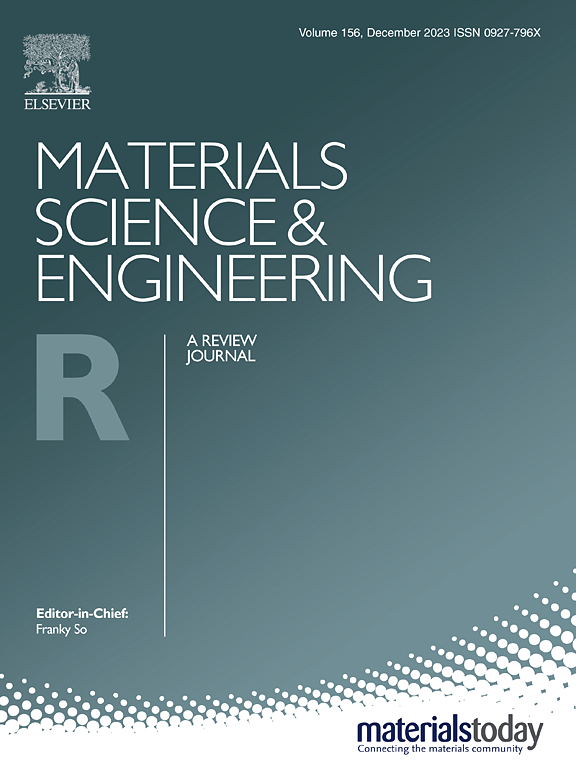Deep eutectic solvents as a ‘multifunctional operating platform’ for nanocellulose production and modification: A review on sustainable composite advancements
IF 31.6
1区 材料科学
Q1 MATERIALS SCIENCE, MULTIDISCIPLINARY
引用次数: 0
Abstract
Nanocellulose, valued for its renewability, biodegradability, and mechanical strength, holds great promise for sustainable technologies. However, its dense hydrogen-bonded structure hinders efficient nanofibrillation and functionalization. This review highlights deep eutectic solvents (DES) as a novel ‘multifunctional operating platform’ (MOP) for nanocellulose preparation, modification, and applications. DES systems uniquely disrupt hydrogen bonding in cellulose, enhancing hydroxyl (-OH) group accessibility and enabling efficient nanocellulose production under mild conditions. By tuning DES composition and processing conditions, control nanocellulose morphology can be precisely controlled to yield cellulose nanofibers (CNFs) or cellulose nanocrystals (CNCs) with tailored properties. DES also enables one-pot functionalization—including esterification, cationization, and grafting—streamlining processes that typically require harsh conditions. This integrated strategy overcomes key limitations of traditional methods, offering a greener, more efficient pathway to modified nanocellulose. Applications in composites, elastomers, hydrogels, and films demonstrate enhanced mechanical performance, stability, and compatibility, unlocking potential in flexible electronics, packaging, and advanced materials. The review highlights the transformative role of DES in nanocellulose engineering and outlines future directions for expanding its utility in sustainable, high-performance material science.
深度共晶溶剂作为纳米纤维素生产和改性的“多功能操作平台”:可持续复合材料进展综述
纳米纤维素因其可再生性、可生物降解性和机械强度而受到重视,在可持续技术方面前景广阔。然而,其致密的氢键结构阻碍了高效的纳米纤化和功能化。本文综述了深共晶溶剂(DES)作为纳米纤维素制备、改性和应用的新型“多功能操作平台”(MOP)。DES系统独特地破坏纤维素中的氢键,增强羟基(-OH)基团的可及性,并在温和条件下实现高效的纳米纤维素生产。通过调整DES的组成和加工条件,可以精确控制纳米纤维素的形态,从而生产出具有特定性能的纤维素纳米纤维(CNFs)或纤维素纳米晶体(cnc)。DES还支持一锅功能化(包括酯化、阳离子化和接枝),简化了通常需要恶劣条件的过程。这种综合策略克服了传统方法的关键局限性,为改性纳米纤维素提供了更环保、更有效的途径。复合材料、弹性体、水凝胶和薄膜的应用展示了增强的机械性能、稳定性和兼容性,释放了柔性电子、封装和先进材料的潜力。这篇综述强调了DES在纳米纤维素工程中的变革作用,并概述了其在可持续、高性能材料科学中扩大应用的未来方向。
本文章由计算机程序翻译,如有差异,请以英文原文为准。
求助全文
约1分钟内获得全文
求助全文
来源期刊

Materials Science and Engineering: R: Reports
工程技术-材料科学:综合
CiteScore
60.50
自引率
0.30%
发文量
19
审稿时长
34 days
期刊介绍:
Materials Science & Engineering R: Reports is a journal that covers a wide range of topics in the field of materials science and engineering. It publishes both experimental and theoretical research papers, providing background information and critical assessments on various topics. The journal aims to publish high-quality and novel research papers and reviews.
The subject areas covered by the journal include Materials Science (General), Electronic Materials, Optical Materials, and Magnetic Materials. In addition to regular issues, the journal also publishes special issues on key themes in the field of materials science, including Energy Materials, Materials for Health, Materials Discovery, Innovation for High Value Manufacturing, and Sustainable Materials development.
 求助内容:
求助内容: 应助结果提醒方式:
应助结果提醒方式:


